Special Report
20 Islands That Will Disappear in Your Lifetime
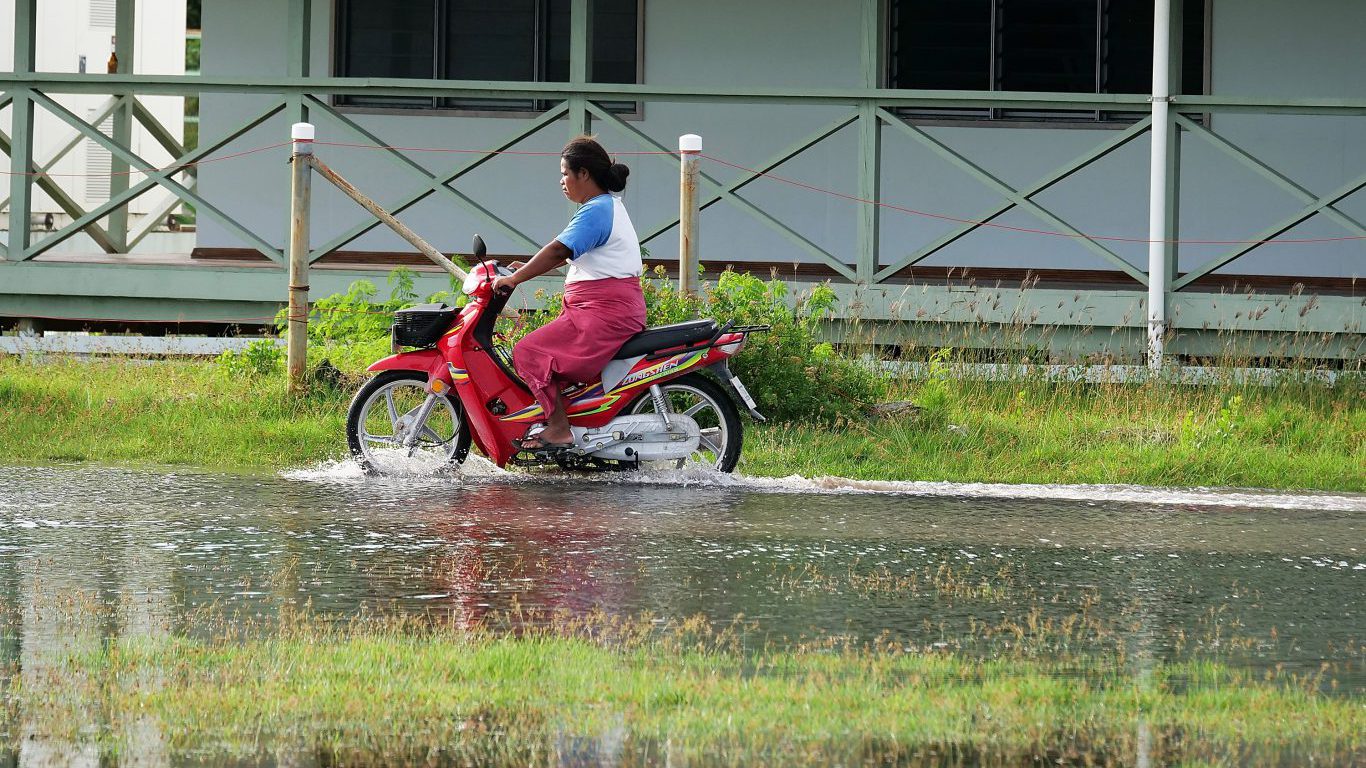
Published:
Last Updated:

One of the first acts of the Biden Administration was to rejoin the Paris Agreement, which aims to reduce carbon emissions in an attempt to slow the rate of global climate change. The key goal is to prevent a temperature increase of more than 2˚ Celsius relative to pre-industrial levels. If that goal is not met, the consequences could be far-reaching and include widespread extinction, severe drought, and substantial sea level rise.
Even in the less extreme scenarios, the oceans are expected to rise several feet by the end of the century. This means that low-lying populated islands, including many island nations with hundreds of thousands of residents, are at high risk of disappearing in the coming years. Many of these island nations are taking action, formulating sustainability strategies, building walls to keep out rising oceans, relocating people who are at risk from surging sea levels, or planning to construct floating islands sustained by solar and wind power like French Polynesia.
24/7 Wall St. identified the islands that, as a result of the ongoing sea level rise, are likely to lose substantial landmass by the end of the century.
The severity may vary locally, but it is a global issue nonetheless. At the Copenhagen climate conference in 2009, a spokesperson for small island nations warned that many would not survive a two-degree rise: “Some countries will flat-out disappear.”
Because of differences in water temperature, tectonic shifting, and the Coriolis effect, Ocean and sea levels are not rising evenly. In some parts of the world, therefore, especially in Southeast Asia and the Pacific Islands, as well as the East Coast of the United States, water levels had already risen faster than in other parts of the world. In addition to the islands at risk, there are some very highly populated cities in these places that are similarly at risk for inundation. Here are some cities around the world that could soon be underwater.
Click here to see 20 islands that will disappear in your lifetime.

1. Federal States of Micronesia
> Population: 113,815
The average rate of sea-level rise worldwide has been about one-tenth of an inch (3.1 mm) per year since 1993. But sea-level around the Federated States of Micronesia, which consists of four main island groups — Yap, Chuuk, Pohnpei, and Kosrae — is rising at three times the rate. The sea level is rising at more than 10 mm — nearly half an inch — a year. Parts of the country are at risk of disappearing because of coastal flooding, erosion, and storm surges.
Some parts of Micronesia are volcanic mountains and well above any potential sea level rise, but many of the smaller islands only lie a few feet above sea level at their highest point.
[in-text-ad]
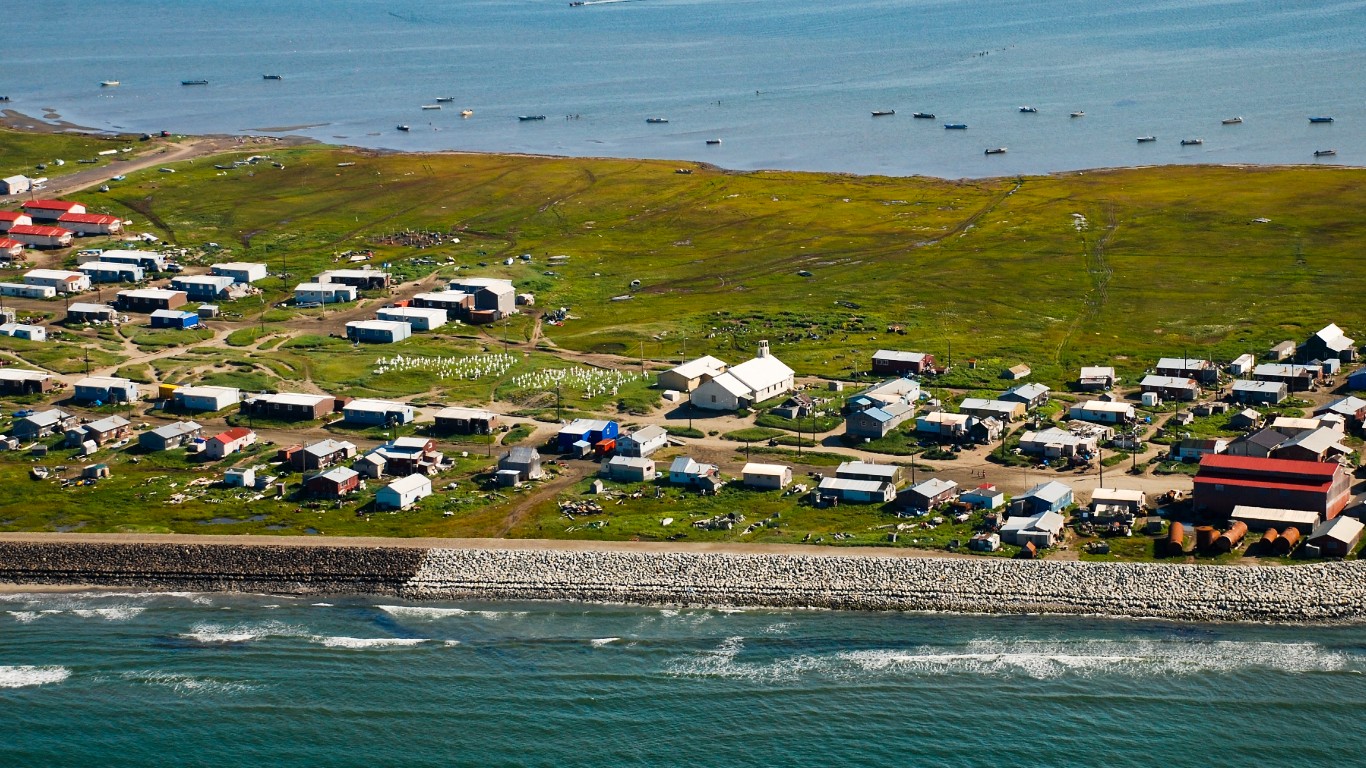
2. Shishmaref, Alaska
> Population: 498
People living in Shishmaref, Alaska, located near the Bering Strait, voted in 2016 to relocate before conditions forced them to do so. Both rising sea levels and melting sheet ice and permafrost are causing erosion. Alaska had granted the city $8 million toward the move, but officials say it will cost $200 million.
Due to lack of funding, the village has yet to relocate. One Public Radio International story referred to Shishmaref as “ground zero for climate change in the Arctic.”
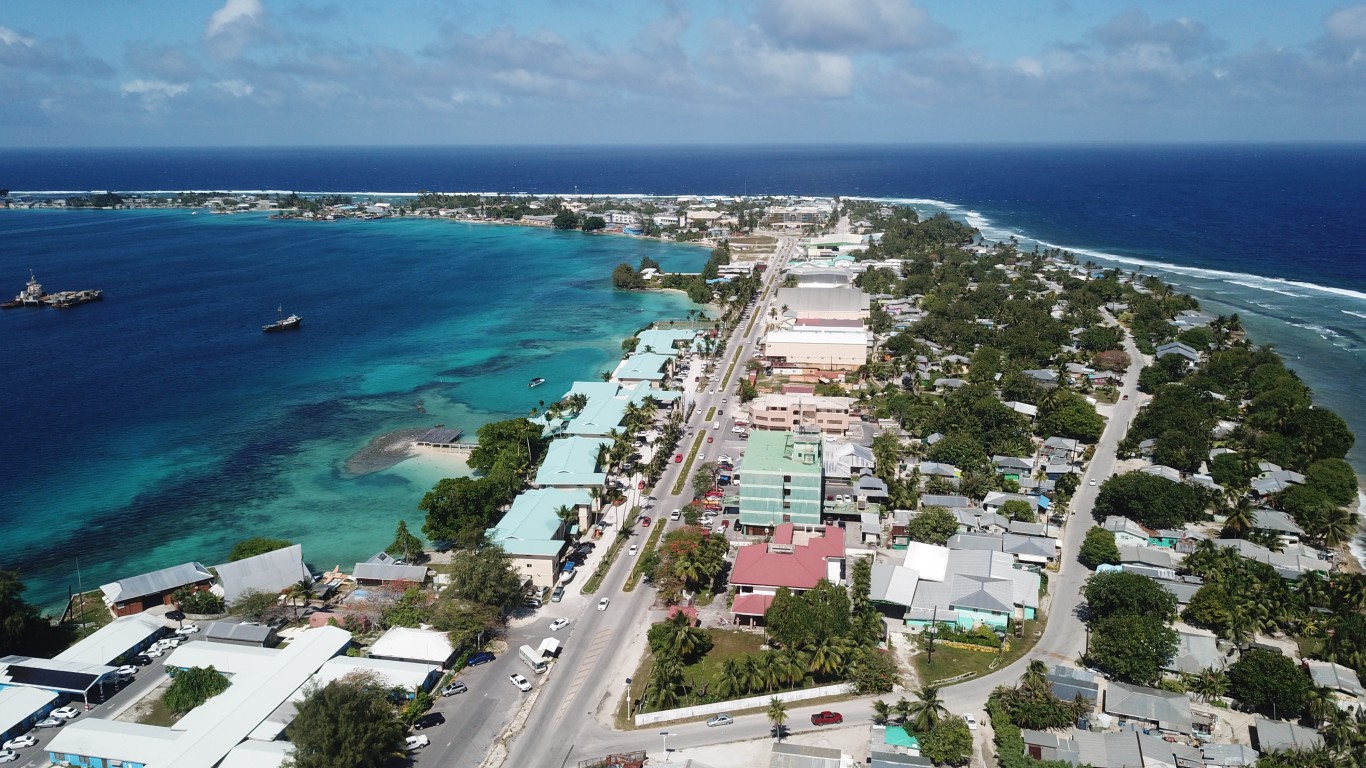
3. Marshall Islands
> Population: 58,791
Residents of Marshall Islands, a chain of volcanic islands and coral atolls in the central Pacific Ocean, have known for years that they must either build new artificial islands to relocate or raise the existing ones. Some research suggests that the sea level in the Marshall Islands will rise by as many as 16 inches by 2045 if nothing is done to fight climate change. A large portion of the islands’ population have fled the island for the U.S.
The highest point on any of the islands is currently about 32 feet above sea level, but most of the residences are located close to the water.
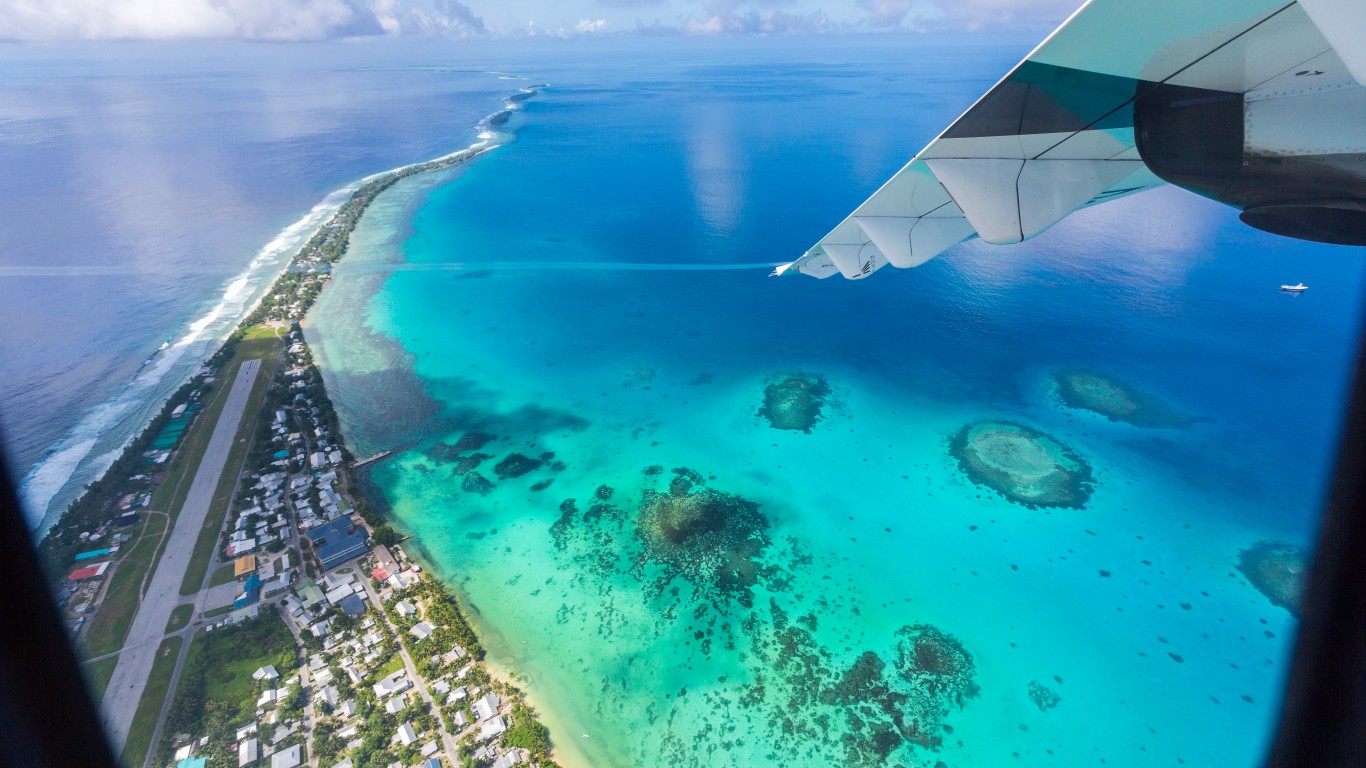
4. Tuvalu
> Population: 11,646
Tuvalu is a small chain of islands in the Pacific Ocean, about 2,000 miles northeast of Australia. Its relatively small size and isolated location have made it enticing to tourists but also susceptible to climate change. At their highest point the islands are 15 feet above sea level.
For years, Tuvalu representatives have raised alarms that climate change could raise sea levels enough to submerge the islands. Even if waters never reach that height, Tuvalu could still become uninhabitable as rising sea levels have contaminated the nation’s groundwater resources and caused reduced crop yields.
[in-text-ad-2]
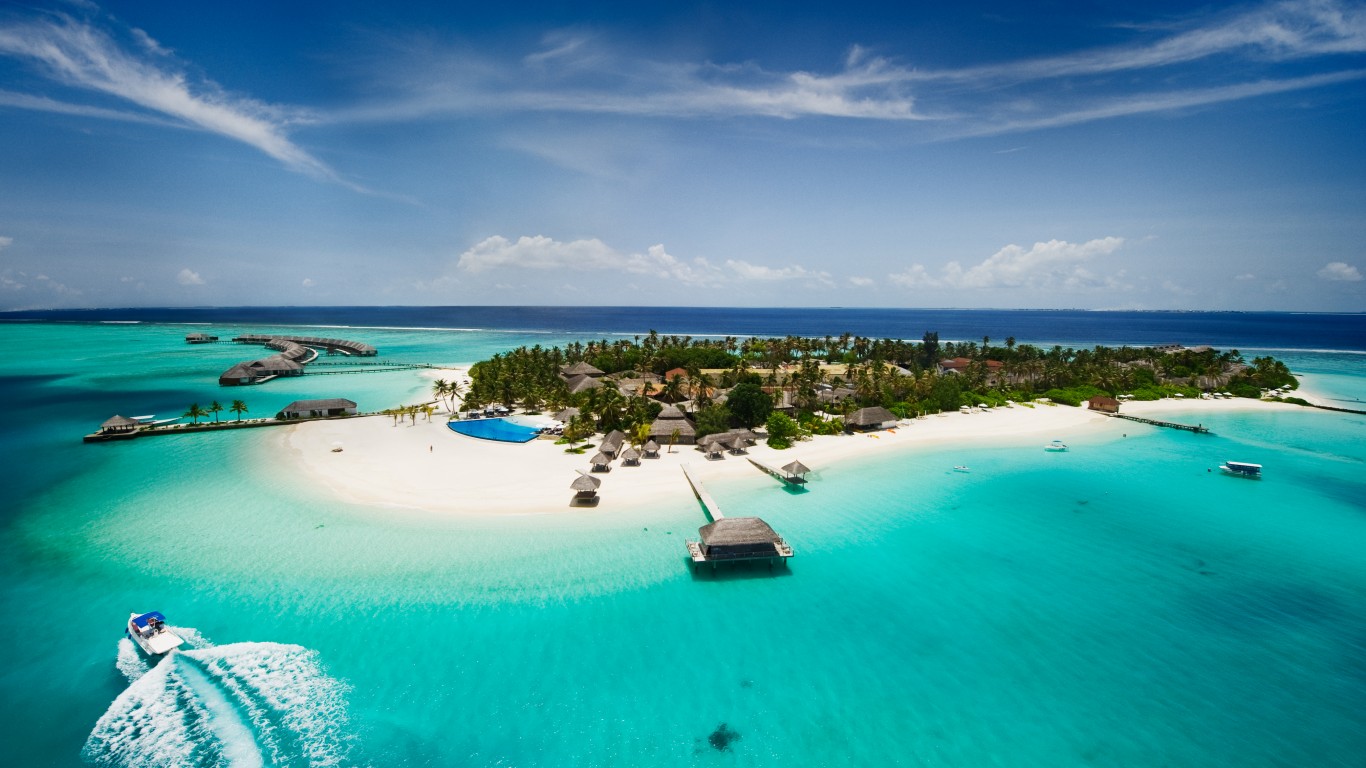
5. Maldives
> Population: 530,953
The Maldives is one of the nations that is most vulnerable to sea-level rise. The vast majority of the nation’s land area is less than 3 feet above sea level. These islands off the southern coast of India are a popular tourist destination, but climate change is already affecting the tourism industry. Nearly half of all tourist resorts have experienced “severe beach erosion.”
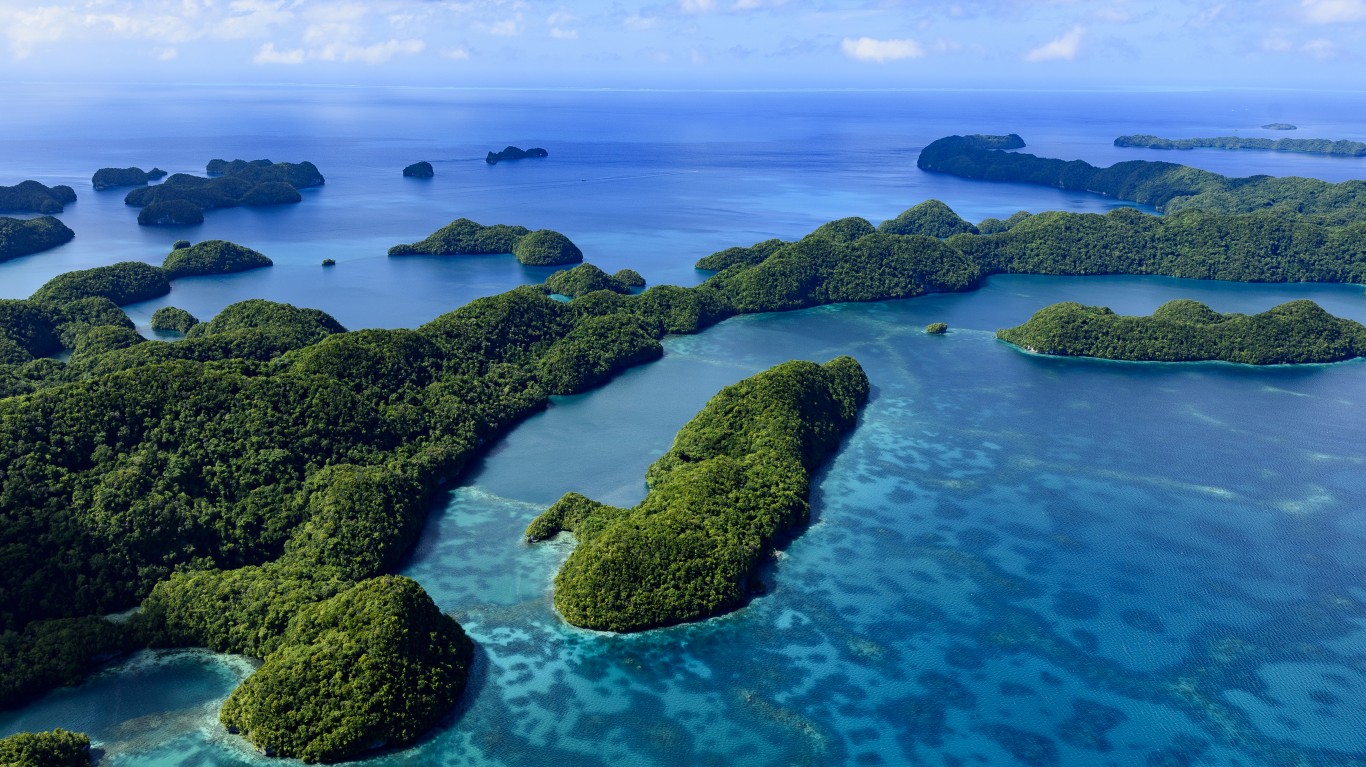
6. Palau
> Population: 18,008
The sea level has risen in Palau, a country of about 700 islands, by about 0.35 inches, or 9 mm, per year since 1993, about three times the global average rise, according to research by the Pacific-Australia Climate Change Science Program.
The accelerated rate may be due to natural weather phenomena that occur periodically such as the El Niño-Southern Oscillation. Sea level is expected to rise between 5.5 and 13.8 inches by 2050, largely depending on the amount of global greenhouse gas emissions released into the atmosphere.
[in-text-ad]
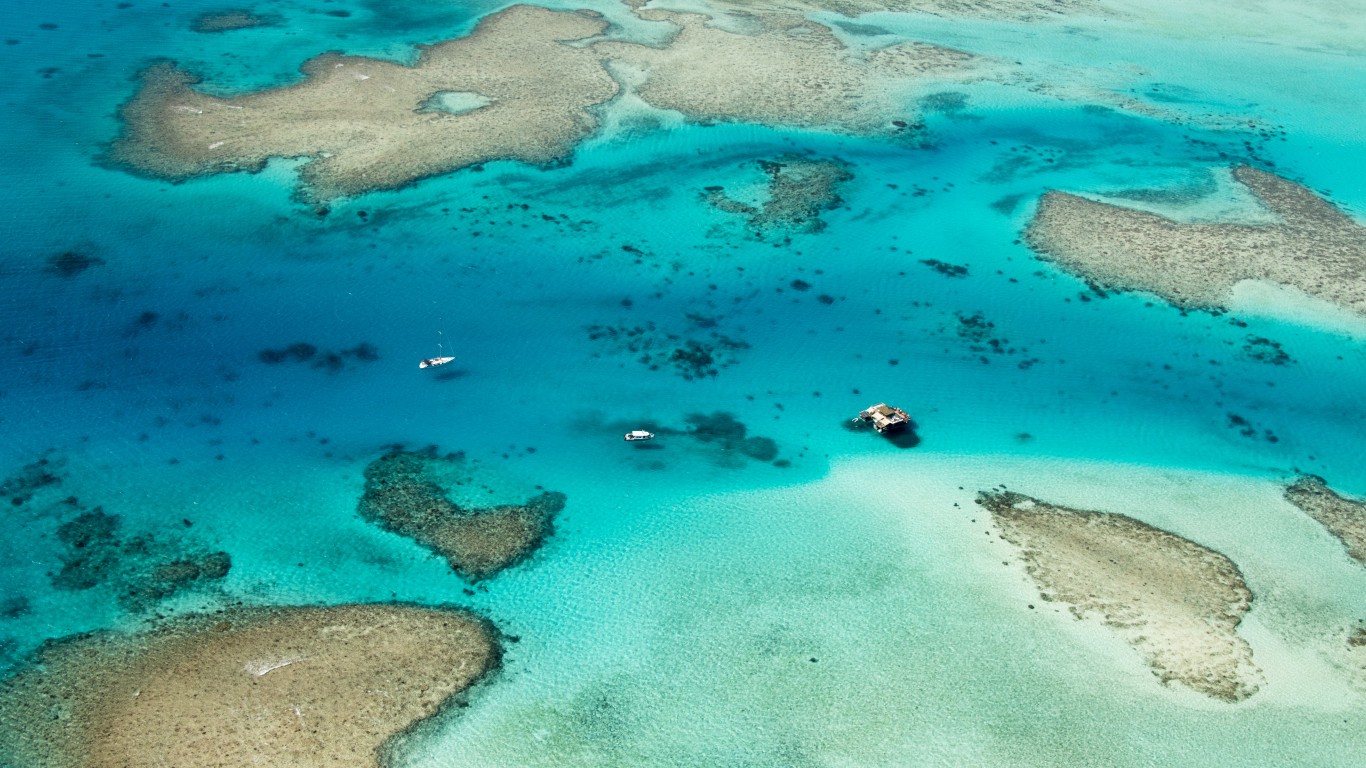
7. Fiji
> Population: 889,953
Fiji, a popular honeymoon destination consisting of more than 300 islands in the South Pacific, is at the mercy of climate change. Powerful tropical cyclones, erosion, and flooding are part of the reason the annual sea level in Fiji has been rising by an average of about a quarter of an inch per year since 1993. In 2012, the entire population of one village abandoned its homes and relocated to higher ground.
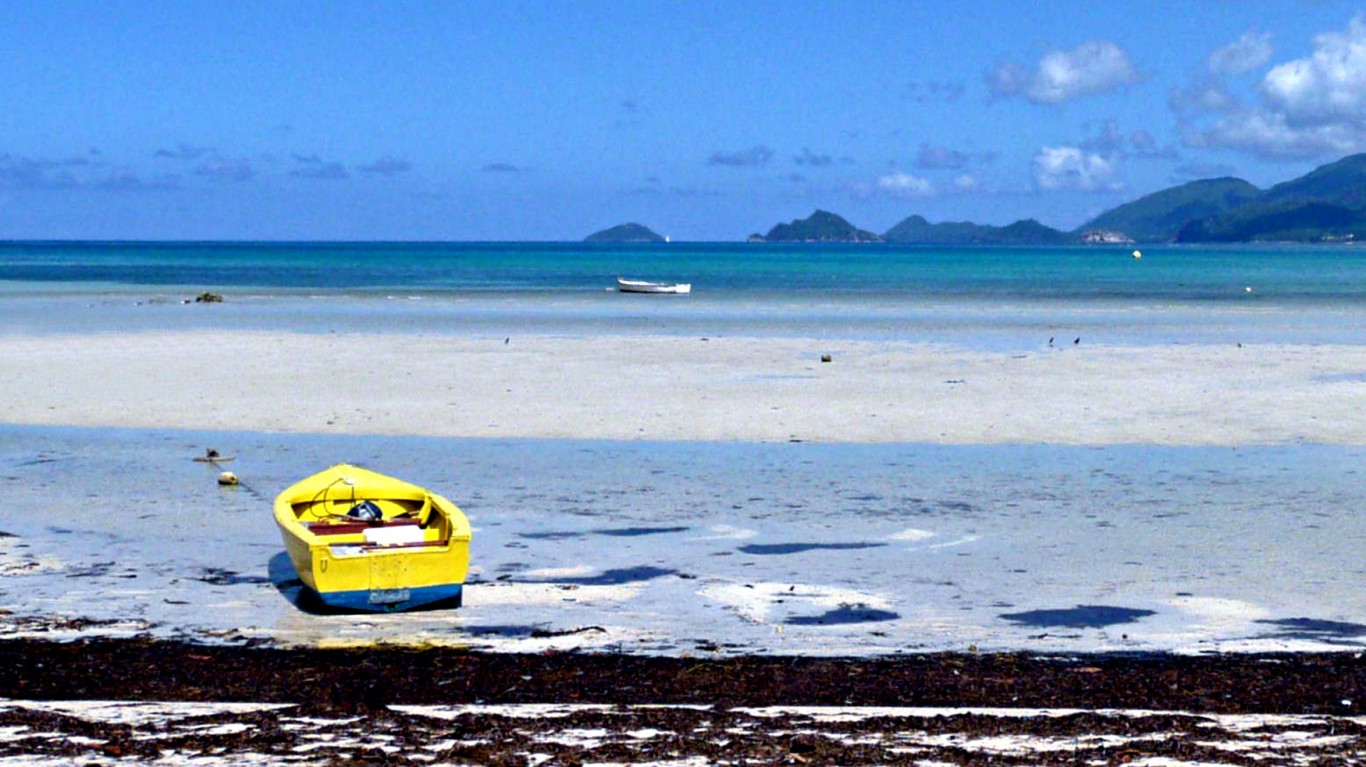
8. Seychelles
> Population: 97,625
The 115-island archipelago in the Indian Ocean is primarily a tourist destination — but its beaches are eroding. Theoretically, a 1 meter (39 inches) of sea-level rise would inundate 70% of the nation’s landmass.
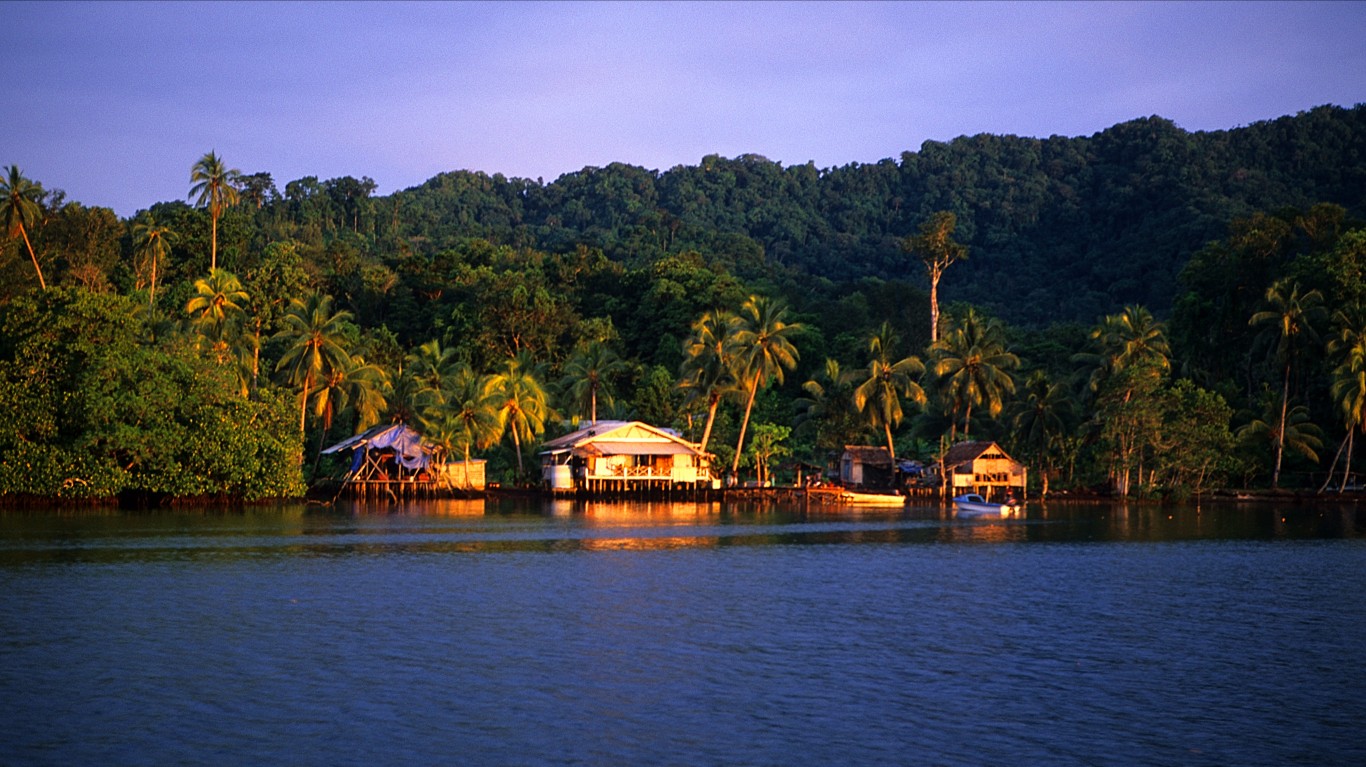
9. Solomon Islands
> Population: 669,823
The Solomon Islands, a nation made up of six major islands in the South Pacific, has already lost five reef islands because of sea level rise and erosion caused by climate change, according to a 2016 study published in Environmental Research Letters.
The sea level has been rising in the Solomon Islands archipelago by just under a half an inch (10.1 mm) per year, more than three times the global average of sea level rise. Villages have been forced to relocate because much of their land is now under water.
[in-text-ad-2]
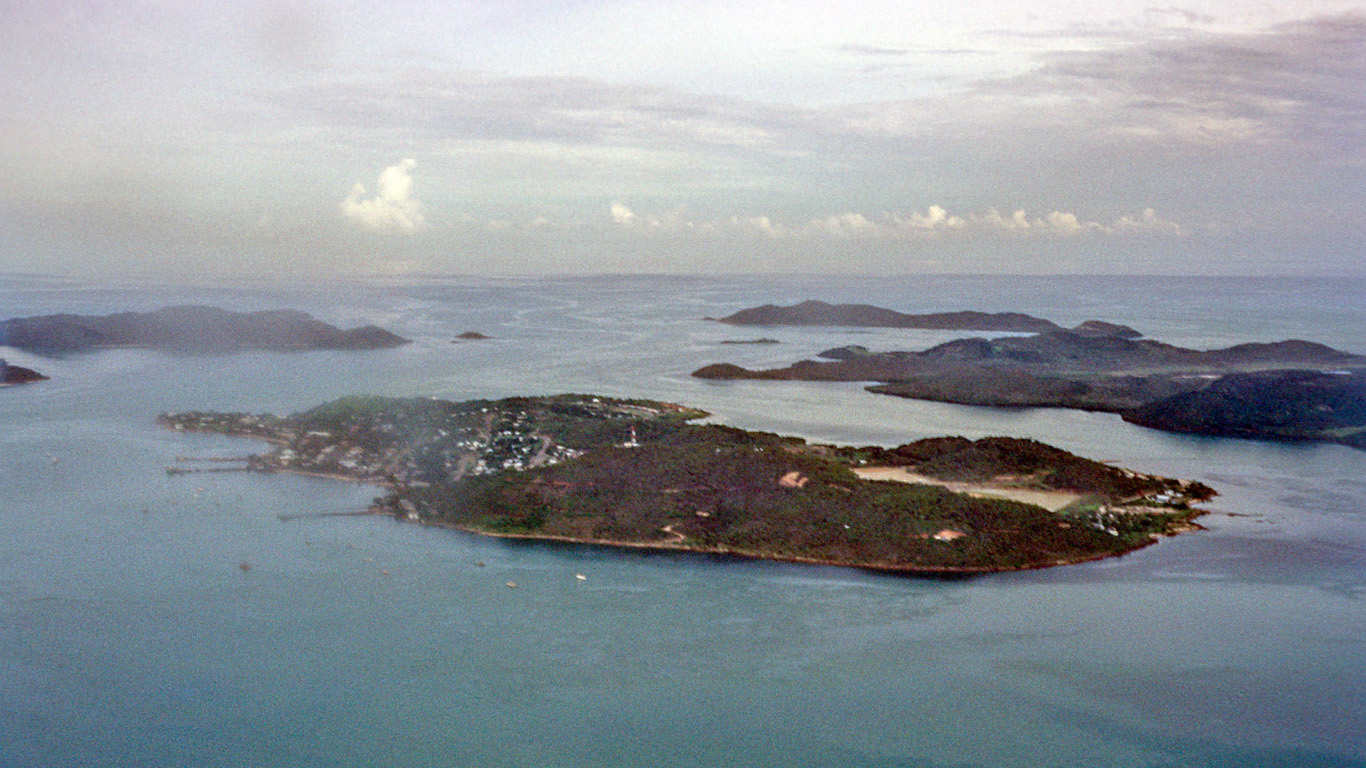
10. Torres Strait Islands, Australia
> 2016 Population: 4,514
Sea levels around the Torres Strait Islands are rising at an average rate of 6 mm to 8 mm per year, almost triple the global average sea-level rise.
The ocean water has become warmer and more acidic due to increasing levels of carbon dioxide The increased acidity has also sped up erosion as the acid in the water reacts with minerals in the soil. Local governments have organized climate change workshops to develop and adapt plans to deal with the threat of rising sea levels.
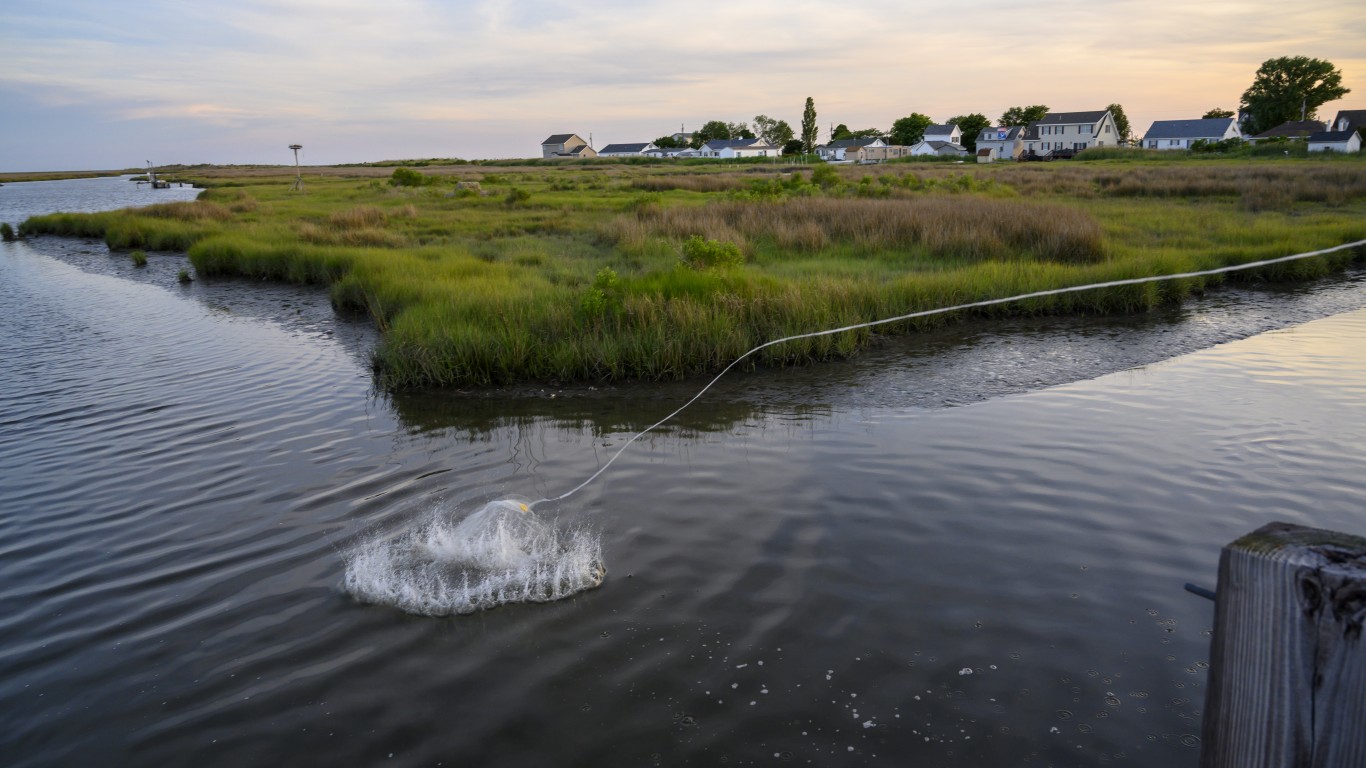
11. Tangier Island, Virginia
> Population: 701
Tangier Island, Virginia, also called the soft-shell capital of the world, is on the front lines of climate change in the United States. The highest point of the island is just 6 feet above sea level. The island has lost two-thirds of its total landmass since 1850.
Storm-powered erosion and sea-level rise of about an inch per year may force people to flee the island. The state of Virginia has offered $3 million to build a wall around the island’s harbor, but some residents believe a wall around the entire island would be needed to prevent further erosion.
[in-text-ad]

12. Cape Verde
> Population: 548,935
Cape Verde is a nation comprising a group of islands off the west coast of Africa. Like many island states, Cape Verde is vulnerable to climate change impacts because of its relatively small above-water landmass, high population density, inadequate protective infrastructure, and a shortage of potable water resources.
Because of its geographic location, Cape Verde is also prone to natural catastrophes. Im 2007, the archipelago has embarked on a strategy to integrate environmental issues into its planning goals and promote sustainable development.
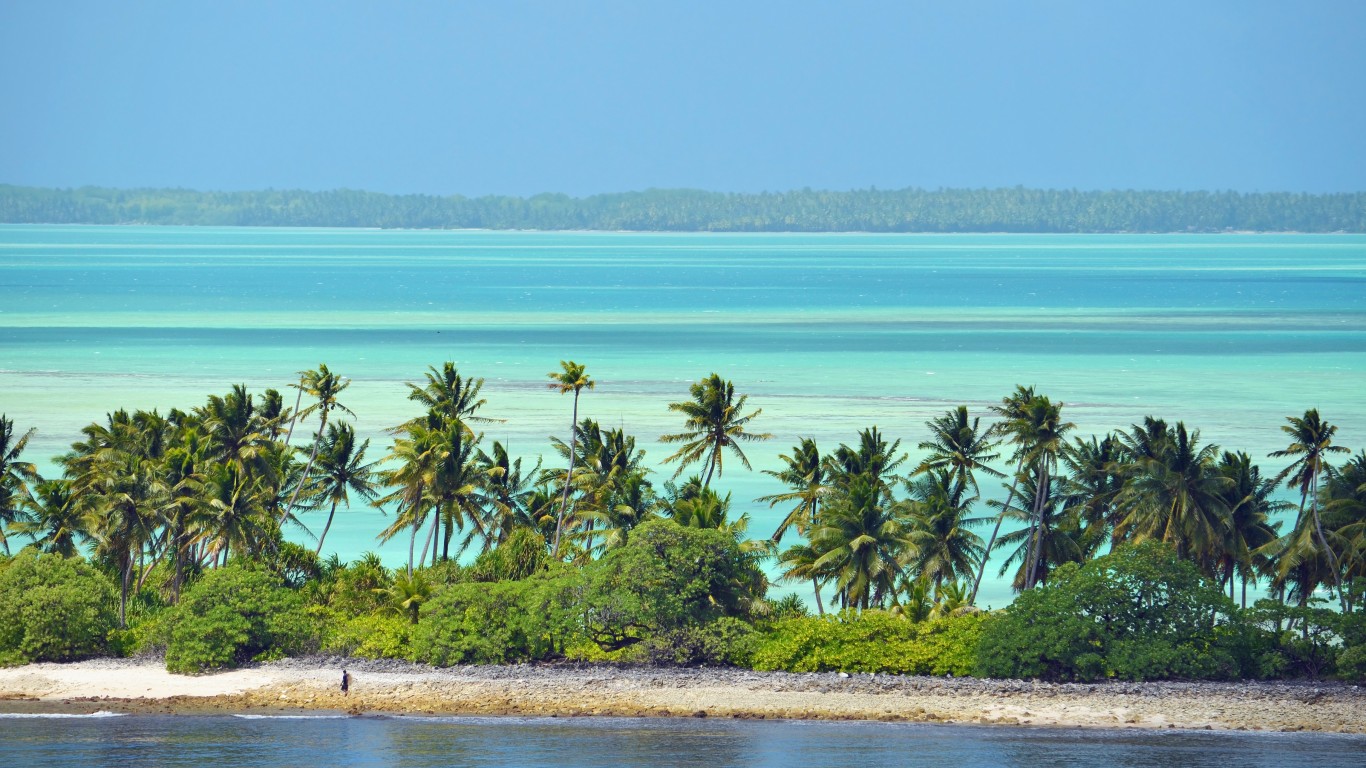
13. Kiribati
> Population: 117,606
Kiribati, which consists of 33 islands with a total landmass of just 309 square miles that are no more than 6 feet above sea level, may actually become the first to be completely submerged by rising sea levels due to global warming. Rising sea levels have already swallowed sections of the coastline. The country is expected to become uninhabitable long before it’s completely under water.
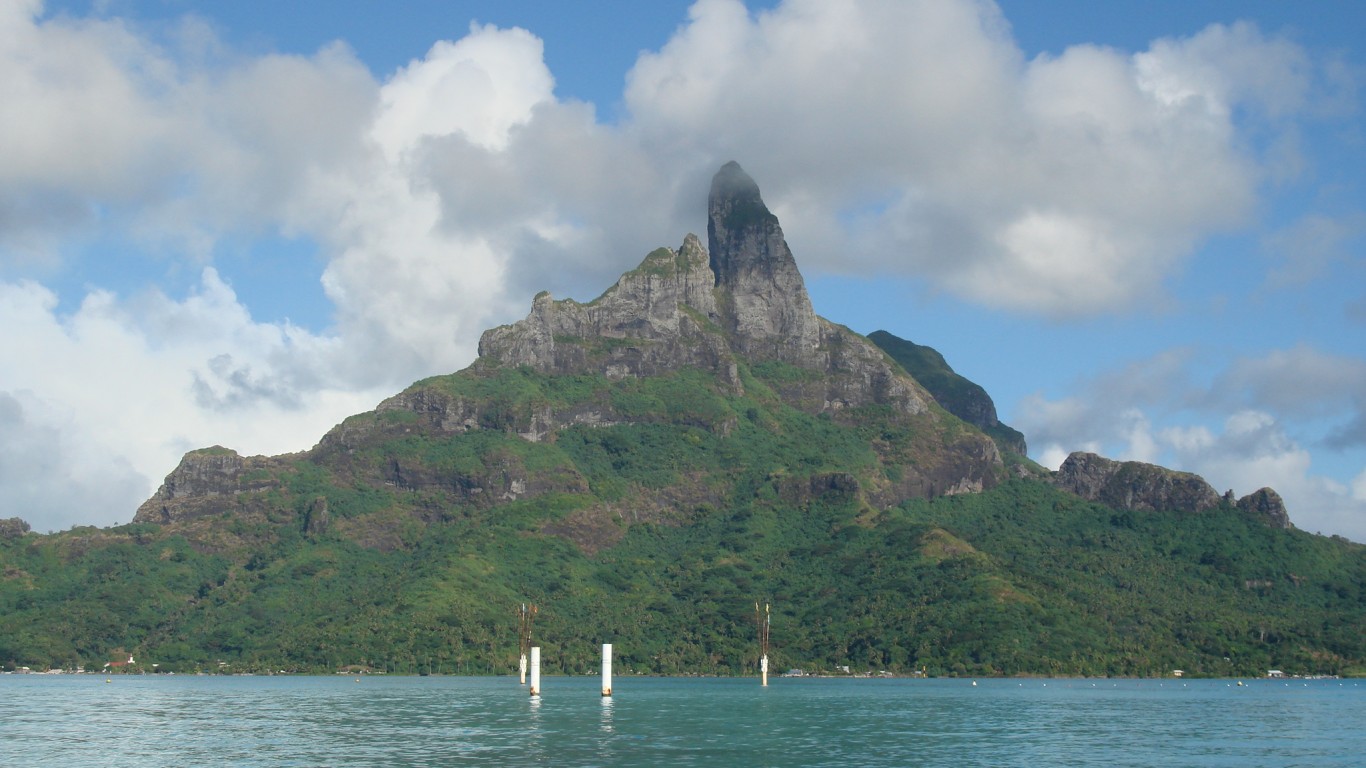
14. French Polynesia
> Population: 279,287
French Polynesia is home to two of the most exotic travel destinations in the world — Bora Bora and Tahiti. With the island group threatened by rising seas, the California-based Seasteading Institute has introduced the Floating City Project, which is a proposed self-sustainable community whose energy is provided by solar and wind power.
The Pacific nation became the first in January 2017 to sign an agreement to build the floating islands off its coast. The U.N.’s Intergovernmental Panel on Climate Change said sea levels in French Polynesia are expected to rise by as many as 32 inches by the late 21st century.
[in-text-ad-2]
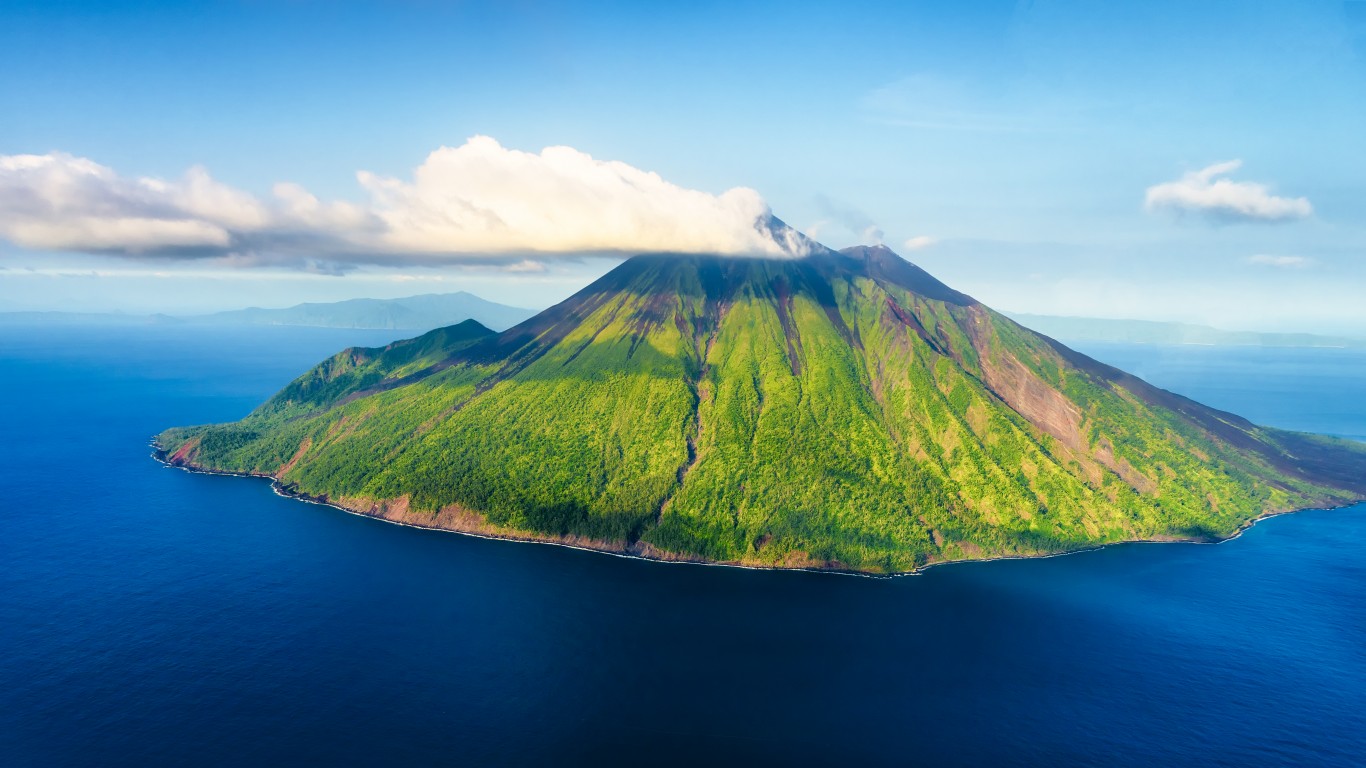
15. Vanuatu
> Population: 299,882
Vanuatu, formerly called the New Hebrides, is an island nation in the South Pacific, northeast of Australia and west of Fiji. Like many islands in the Pacific, rising ocean temperatures as a result of climate change will have a profound impact on the nation’s fisheries, one of the most significant sources of food in Vanuatu, and the impact will be felt also in tourism.
The nation is already feeling the effects of coastal erosion and ocean acidification. Vanuatu is signatory to the Paris Agreement that aims to limit greenhouse gases, and it has adapted plans to reduce the risk of disaster from these inevitable changes.
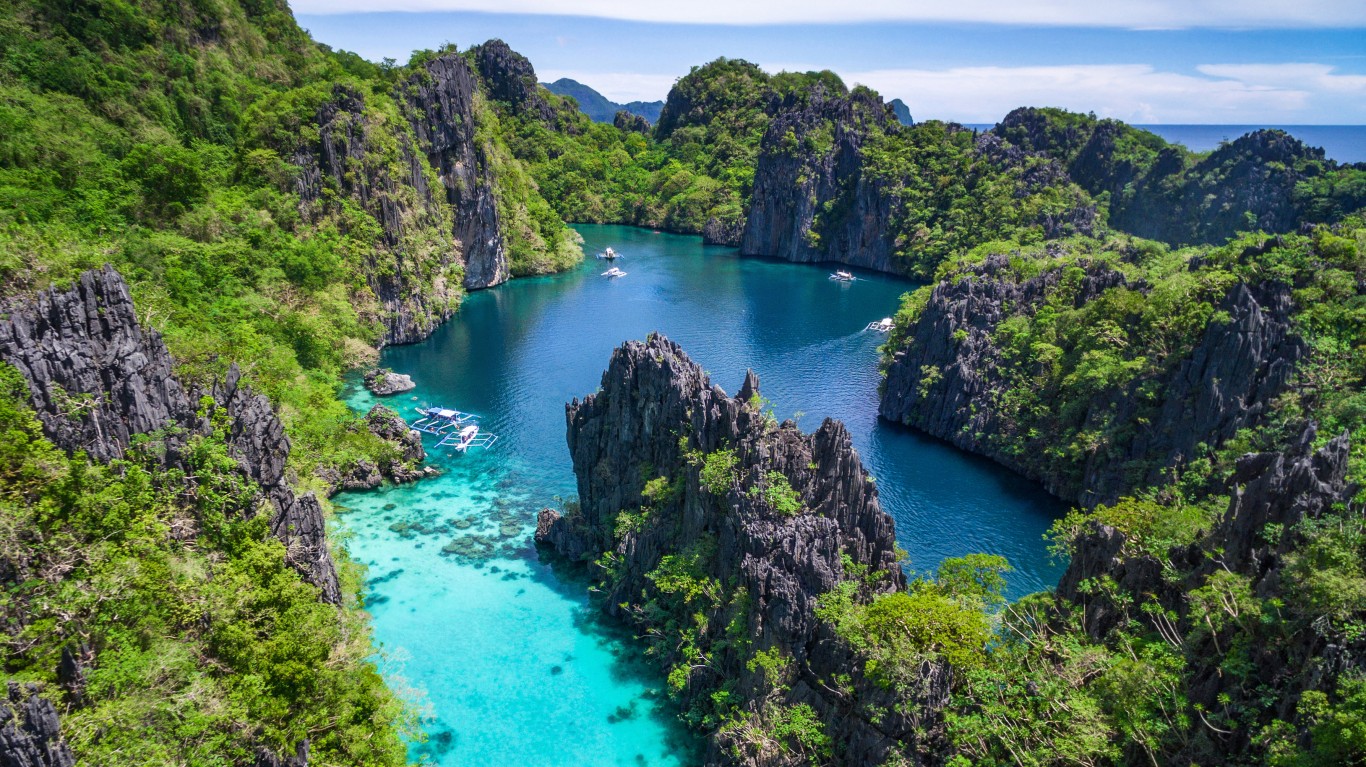
16. The Philippines
> Population: 108.1 million
The Philippines consists of 7,107 islands. It is also one of the most vulnerable Asian nations to the effects of climate change, according to a 2018 HSBC report. Sea levels in the Philippines are projected to rise by 9 to 18.5 inches by the end of the 21st century.
Typhoons are common in the Philippines, and these events are forecast to become more intense because of rising sea surface temperatures. Storms and sea-level increases are projected to affect 60% of towns in the island nation. Ten of its largest cities are located on the coast. The United States Agency for International Development and the Philippines are advocating for low emissions development strategies and seeking to improve ways to address climate change.
[in-text-ad]
17. Grenada
> Population: 111,454
The Caribbean island nation of Grenada just north of South America was slammed by two hurricanes in 2004. The hurricanes destroyed 90% of the nation’s buildings and caused damage 2.5 times its gross domestic product. According to a Grenada government recent report, climate change is already disrupting economic sectors such as tourism and agriculture.
To address the projected impacts of climate change, Grenada has implemented plans such as more construction of concrete structures and expanding education about the effects of climate change on the community.

18. Hatteras Island, North Carolina
> Population: 4,322
The Outer Banks on Hatteras Island are a very popular summer destination, known for wild horses roaming freely and, of course, beaches. But some areas of the island chain are disappearing due to severe storms and rising sea levels brought on by global warming as well as urban development. A part of Hatteras Island has already lost 75% of its original width.
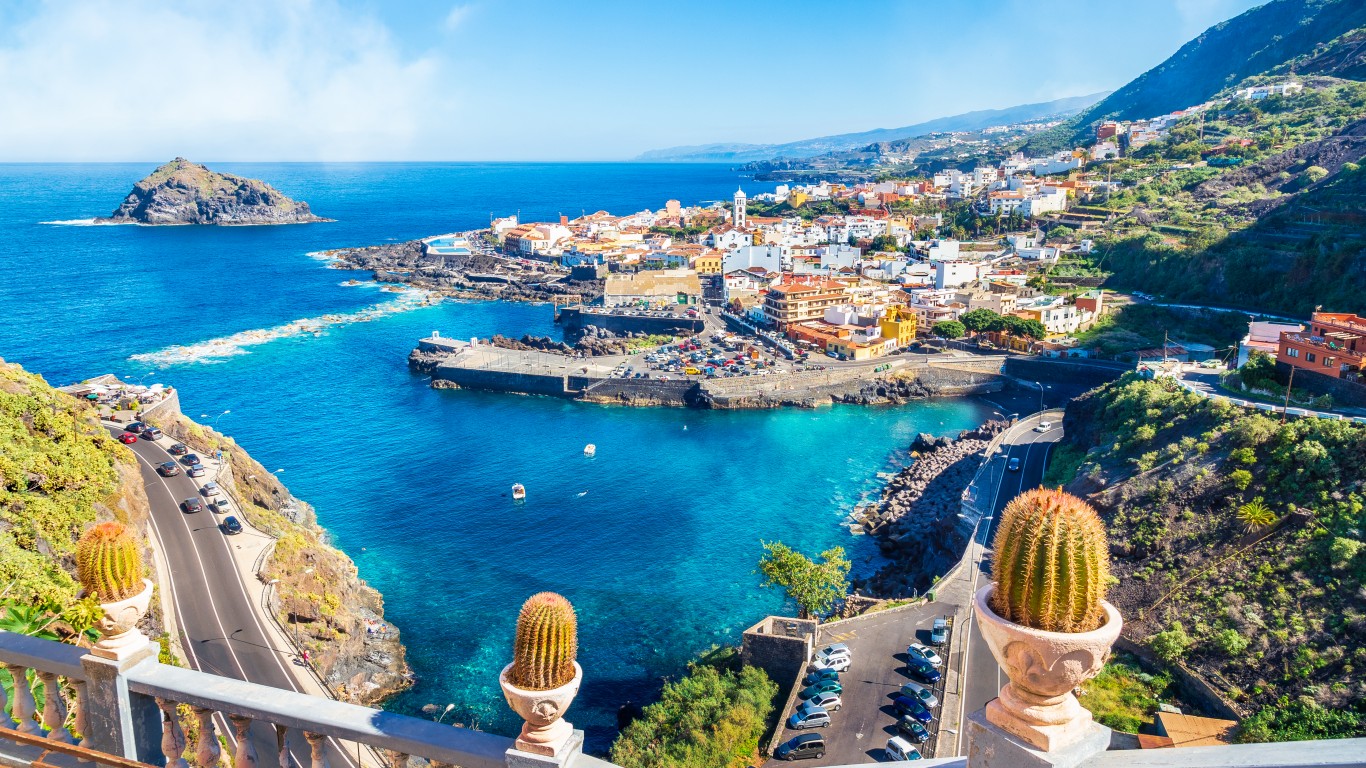
19. Canary Islands, Spain
> Population: 2.1 million
Climate change is reportedly having a profound effect on animal life in the Canary Islands, which are located just off the coast of Morocco in the Atlantic Ocean. Government officials have raised concerns that rising temperatures could allow non-native pests to flood the islands. Such pests could destroy the agricultural industry and be expensive to treat.
Agricultural groups in the islands have also noted that droughts, heat waves, and dust storms blowing across the water from the nearby Sahara Desert could spell disaster for the country’s food sector.
[in-text-ad-2]
20. Isle de Jean Charles, Louisiana
> Population: 77
Locals in Isle de Jean Charles have lost 98% of their land since 1955 due to gradual sinking, erosion, and sea-level rise. Only 29 homes remain. The U.S. federal government granted the island $48 million to relocate residents, an unprecedented move. The money was used to buy land on higher ground some 40 miles from the island.In May of 2020, ground was broken on the new project.
The thought of burdening your family with a financial disaster is most Americans’ nightmare. However, recent studies show that over 100 million Americans still don’t have proper life insurance in the event they pass away.
Life insurance can bring peace of mind – ensuring your loved ones are safeguarded against unforeseen expenses and debts. With premiums often lower than expected and a variety of plans tailored to different life stages and health conditions, securing a policy is more accessible than ever.
A quick, no-obligation quote can provide valuable insight into what’s available and what might best suit your family’s needs. Life insurance is a simple step you can take today to help secure peace of mind for your loved ones tomorrow.
Click here to learn how to get a quote in just a few minutes.
Thank you for reading! Have some feedback for us?
Contact the 24/7 Wall St. editorial team.